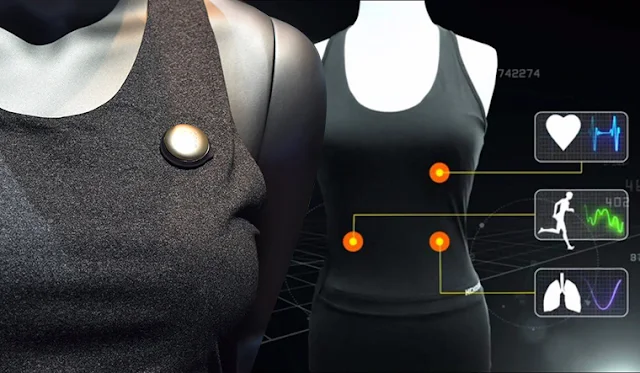Biometric clothing, also known as smart clothing or e-textiles, refers to garments embedded with technology that can measure and collect biological data (biometrics) from the wearer. This data can include a wide range of physiological signals and body movements.
Here's a breakdown of what that entails:
Key Features of Biometric Clothing:
* Integrated Sensors: The clothing incorporates sensors directly into the fabric or as small, unobtrusive attachments. These sensors can measure various biometric parameters.
* Data Collection: The sensors gather data on the wearer's body in real-time and continuously.
* Data Transmission: The collected data is typically transmitted wirelessly (e.g., via Bluetooth) to a paired device like a smartphone, tablet, or computer for analysis and storage.
* Comfort and Wearability: Biometric clothing is designed to be comfortable and washable, often made from high-performance fabrics that are breathable and flexible.
* Power Source: These garments require a power source to operate the sensors and transmitters, usually a small, often removable or rechargeable battery pack.
What Biometric Clothing Can Measure:
The specific data collected depends on the sensors integrated into the garment. Common measurements include:
* Heart Rate and Heart Rate Variability (HRV)
* Respiration Rate and Breathing Patterns
* Muscle Activity (Electromyography - EMG)
* Body Temperature
* Sleep Patterns (Resting Heart Rate, Movement)
* Activity Levels (Steps, Cadence, Calories Burned, Intensity)
* Posture and Movement Analysis
* Sweat Analysis (Electrolyte levels, hydration)
* Blood Oxygen Saturation (SpO2) in some advanced applications
* Even more specialized data like stress levels or early signs of injury in specific applications.
Applications of Biometric Clothing:
Biometric clothing has a wide range of potential and current applications across various fields:
* Sports and Fitness:
* Monitoring athletic performance in real-time (heart rate, pace, intensity).
* Analyzing movement and technique to optimize training.
* Tracking recovery and sleep quality for athletes.
* Preventing overtraining and potential injuries by identifying subtle changes in physiological data.
* Healthcare and Wellness:
* Remote patient monitoring of vital signs for chronic conditions.
* Early detection of health issues or anomalies.
* Sleep monitoring and analysis for sleep disorders.
* Stress management through physiological data feedback.
* Rehabilitation monitoring and progress tracking.
* Elderly care and fall detection (in some developments).
* Military and First Responders:
* Monitoring the physiological state of personnel in demanding environments.
* Tracking location and safety parameters.
* Assessing stress levels and fatigue.
* Research:
* Collecting large datasets of physiological data in real-world settings.
* Studying human movement, sleep, and other biological processes.
* Ergonomics and Safety:
* Monitoring posture and movement in the workplace to prevent injuries.
* Detecting hazardous conditions based on physiological responses.
* Fashion and Lifestyle:
* Integrating biometric data into personalized experiences.
* Potential for clothing that adapts based on the wearer's physiological state (e.g., temperature regulation).
Examples of Biometric Clothing Companies and Products:
* Hexoskin: Offers smart shirts that track cardiac, respiratory, sleep, and activity metrics.
* Cardiosport: Known for their BioVest and cycling jerseys with integrated heart rate sensors.
* Sensoria Fitness: Provides smart socks and other apparel for motion and activity tracking.
* Under Armour: Has developed smart sleepwear designed to aid recovery.
* Myant: Creates smart fabrics with the potential for various health and wellness applications.
Biometric clothing represents a significant step in wearable technology, moving sensors beyond wrist-worn devices and integrating them seamlessly into everyday garments. As the technology advances, we can expect even more sophisticated and widespread applications of biometric clothing in the future.





Comments
Post a Comment